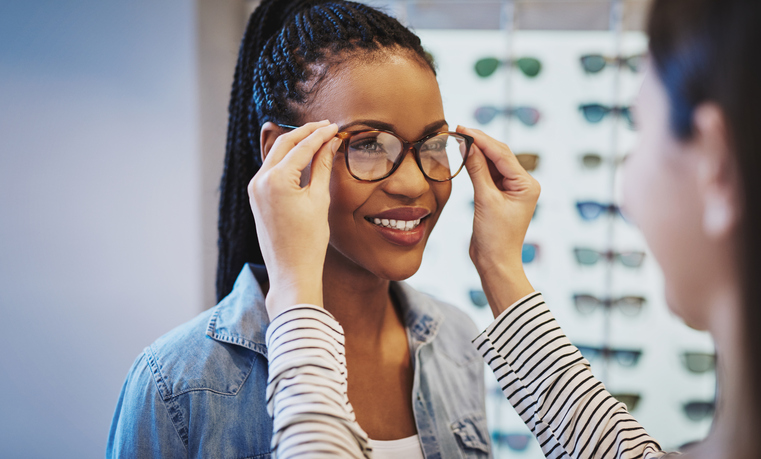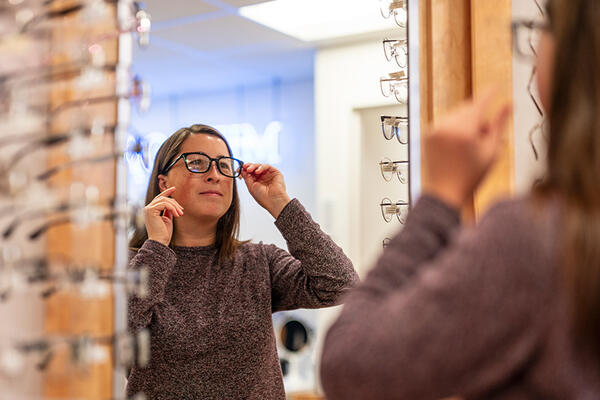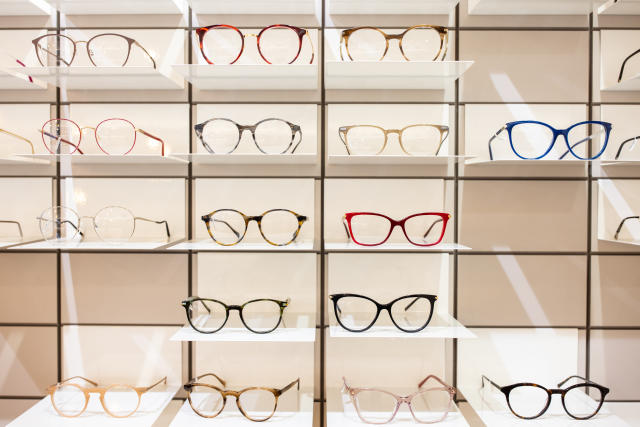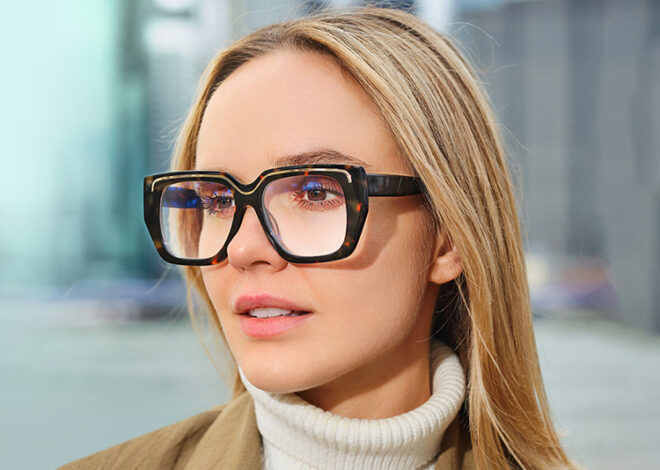
Everything About Optical Frames
When it comes to enhancing your vision and expressing personal style, optical frames play a pivotal role. Not only do they serve as the structural support for your corrective lenses, but they also offer endless opportunities for self-expression. As an optical specialist with years of experience, I’m excited to share insights on everything from the basics of optical frames to tips on reducing eye strain and the effectiveness of modern eyewear innovations.
What Are Optical Frames?
Optical frames are much more than mere accessories—they are the foundation upon which your visual correction is built. Essentially, an optical frame holds your lenses in place, ensuring they align properly with your eyes for the best possible vision correction. But there’s more to optical frames than function alone.
Structure and Materials
Modern optical frames come in a variety of shapes, sizes, and materials, each engineered to meet different lifestyle needs. From lightweight titanium and stainless steel to classic acetate and plastic frames, each material offers distinct advantages:
- Durability: High-quality materials ensure your frames withstand daily wear and tear.
- Flexibility: Some frames feature adjustable components that provide a customized fit.
- Aesthetics: The variety of colors, textures, and designs allows you to choose frames that reflect your personality and style.
A Blend of Function and Fashion
Optical frames have evolved from simple, utilitarian designs to a fashion statement that complements your overall look. Today’s frames are designed not only for optimal lens support but also to enhance facial features and boost confidence. The design innovations reflect an intersection of art and science, where aesthetics meet functionality.
Customization and Innovation
One of the most exciting developments in optical frames is the rise of customization. With advancements in digital measuring and 3D printing, optical professionals can now tailor frames to fit the unique contours of your face. This innovation not only improves comfort and stability but also ensures that every pair of glasses is a perfect match for your vision needs.
Do Computer Glasses Work?
In our increasingly digital world, many people spend hours staring at screens, leading to a surge in eye fatigue and discomfort. Computer glasses are designed to address these modern challenges, but do they really work?
The Science Behind Computer Glasses
Computer glasses are engineered with special lens coatings and tints that help reduce glare, enhance contrast, and minimize blue light exposure. By optimizing the visual environment for digital screens, these glasses can significantly alleviate the symptoms associated with prolonged computer use.
- Glare Reduction: Computer glasses often feature anti-reflective coatings that reduce screen glare. This makes it easier to focus on your work without the distracting effects of light reflections.
- Enhanced Contrast: The lenses are crafted to improve contrast, which helps in distinguishing fine details on the screen. This feature is particularly beneficial for tasks that require precision, such as reading small text or analyzing detailed images.
- Blue Light Filtering: While there’s ongoing debate about the long-term effects of blue light exposure, many computer glasses include a blue light filter that can reduce eye strain. This filtering helps in managing the visual fatigue that often accompanies extended periods of screen time.
Real-World Benefits
Many users report a noticeable improvement in comfort when using computer glasses. They often experience less eye fatigue, reduced headaches, and even better sleep patterns when using these glasses in the evenings. As with any optical solution, the key is to choose a pair that is properly fitted to your needs and prescribed by a professional.
How to Relax Eyes?
Our eyes work tirelessly, especially in a world where screens dominate our daily lives. Knowing how to relax your eyes is essential for maintaining long-term eye health and comfort.
The 20-20-20 Rule
A simple yet effective method for relaxing your eyes is the 20-20-20 rule. Every 20 minutes, take a 20-second break and look at something 20 feet away. This practice helps reset your focus and relieves the continuous strain of close-up work.
Eye Exercises
Engaging in eye exercises can also provide relief. Simple movements like rolling your eyes, focusing on distant objects, or even gently massaging your temples can help increase blood flow and reduce tension.
Maintain a Healthy Environment
Proper lighting plays a critical role in reducing eye strain. Ensure that your workspace is well-lit with natural or soft artificial light to minimize harsh contrasts. Avoid direct glare on your screen by using adjustable blinds or diffused lighting.
Hydration and Blink Often
Our eyes can become dry when we’re focused on screens for extended periods. Blinking frequently helps keep your eyes lubricated, and staying hydrated overall is essential for maintaining eye moisture. If you often experience dryness, consider using lubricating eye drops recommended by your optometrist.

How to Reduce Eye Strain?
Eye strain is a common issue in today’s digital era, but there are several practical steps you can take to minimize its effects.
Ergonomic Workspace Setup
Creating an ergonomic workspace is the first step toward reducing eye strain. Ensure your screen is at eye level and about an arm’s length away. Positioning your monitor correctly can drastically reduce the amount of effort your eyes need to exert to focus.
Adjust Screen Settings
Tweaking your device’s brightness, contrast, and text size can make a significant difference. A screen that’s too bright or too dim can force your eyes to work harder, leading to fatigue. Many devices also offer “night mode” settings that reduce blue light emission, which can be particularly beneficial in low-light conditions.
Regular Breaks
In addition to the 20-20-20 rule, taking longer breaks during the day can help. Step away from your screen, go for a walk, or simply close your eyes for a few minutes. These short intervals of rest allow your eyes to recover and reduce cumulative strain.
Use of Computer Glasses
As mentioned earlier, computer glasses can be an effective tool in mitigating eye strain. When paired with proper screen settings and regular breaks, they can provide a comprehensive approach to protecting your eyes during long hours of computer use.
Do Blue Light Glasses Work?
With the rise of digital devices, blue light glasses have gained popularity as a means to combat digital eye strain. But do they really live up to the hype?
Understanding Blue Light
Blue light is a high-energy visible light emitted by screens and digital devices. While natural exposure to blue light is beneficial during the day, excessive exposure—especially in the evening—can interfere with sleep patterns and contribute to eye fatigue.
The Role of Blue Light Glasses
Blue light glasses are designed to filter out or block a portion of the blue light spectrum, which can help in reducing glare and minimizing digital eye strain. Many users find that these glasses provide relief from symptoms like headaches, blurred vision, and dry eyes.
Scientific Perspectives
Although research on blue light glasses is still evolving, many optometrists and users report positive outcomes. While blue light is not the sole culprit in digital eye strain, filtering it out can create a more comfortable visual environment. It’s important to note that the benefits of blue light glasses may vary from person to person, and they should be considered as part of a broader eye care routine.
Practical Considerations
When choosing blue light glasses, look for pairs that offer high-quality lenses with proven blue light filtering technology. Consult with your optometrist to ensure that the glasses are appropriate for your specific visual needs. In many cases, combining blue light filtering with other features like anti-reflective coatings and proper lens customization can provide a more holistic solution to digital eye strain.
Final Thoughts
Optical frames are a critical element in both vision correction and personal style. From understanding what optical frames are to exploring the benefits of computer and blue light glasses, it’s clear that the right eyewear can transform your visual experience. By investing in high-quality optical frames and embracing practical strategies to relax and protect your eyes, you’re not only enhancing your appearance—you’re taking a proactive step toward long-term eye health.
As an optical specialist, I encourage you to approach your eyewear choices with both care and curiosity. Whether you’re seeking relief from digital eye strain, exploring the latest in frame technology, or simply looking to update your style, remember that the perfect pair of glasses is one that marries science with aesthetics. Trust in expert advice, stay informed about the latest innovations, and always prioritize your eye health.
Thank you for taking the time to read this in-depth exploration of optical frames. I hope the insights shared here empower you to make informed decisions that bring both clarity and comfort to your daily life. Stay stylish, protect your vision, and enjoy the perfect blend of innovation and elegance that modern optical frames have to offer.



